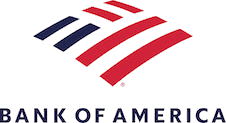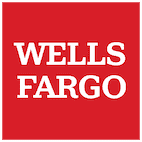| Lender | NerdWallet rating | Best For | Max loan amount | Min. time in business | Min. interest rate | Term length | Learn more |
|---|---|---|---|---|---|---|---|
with Fundera by NerdWallet | Read expert review | Fast funding | $200,000 | 12 months | 14% | 6 to 12 months | with Fundera by NerdWallet |
with Fundera by NerdWallet | Read expert review | Building business credit | $200,000 | 12 months | 40% | 12 to 24 months | with Fundera by NerdWallet |
with Fundera by NerdWallet | Read expert review | Bank lines of credit | $150,000 | 6 months | 8.5% | Undisclosed | with Fundera by NerdWallet |
with Fundera by NerdWallet | Read expert review | Bad credit | $250,000 | 3 months | 36% | 3 months to 2 years and 2 months | with Fundera by NerdWallet |
 | Read expert review | Low interest rates | Undisclosed | 24 months | 8.75% | Undisclosed | |
with Fundera by NerdWallet | Read expert review | New businesses | $100,000 | 6 months | 35% | 12 to 24 months | with Fundera by NerdWallet |
 | Read expert review | Established businesses | $100,000 | 24 months | Undisclosed | Undisclosed |
best unsecured business lines of credit: More details
Bluevine: Best for Fast funding
Bluevine provides credit lines up to $250,000. The lender can approve and fund applications in as little as 24 hours.
Bluevine - Line of credit
with Fundera by NerdWallet
Pros
- Cash can be available within 12 to 24 hours.
- Can be used to build business credit.
- Low minimum credit score requirement.
Cons
- Requires weekly payments.
- Not available in North Dakota, South Dakota or Nevada.
- Rates can be high compared with traditional lenders.
Pros
- Cash can be available within 12 to 24 hours.
- Can be used to build business credit.
- Low minimum credit score requirement.
Cons
- Requires weekly payments.
- Not available in North Dakota, South Dakota or Nevada.
- Rates can be high compared with traditional lenders.
with Fundera by NerdWallet
OnDeck: Best for Building business credit
OnDeck offers a flexible unsecured line of credit in amounts up to $100,000. Responsible spending can help you build your business credit history.
OnDeck - Line of credit
with Fundera by NerdWallet
Pros
- Fast access to working capital.
- Accepts borrowers with a minimum credit score of 625.
- Streamlined application process with minimal documentation required.
- Can be used to build business credit.
Cons
- Not available in North Dakota.
- May require frequent weekly payments.
- Interest rates can be high compared with traditional lenders.
Pros
- Fast access to working capital.
- Accepts borrowers with a minimum credit score of 625.
- Streamlined application process with minimal documentation required.
- Can be used to build business credit.
Cons
- Not available in North Dakota.
- May require frequent weekly payments.
- Interest rates can be high compared with traditional lenders.
with Fundera by NerdWallet
Wells Fargo: Best for Bank lines of credit
Wells Fargo offers unsecured credit lines of up to $150,000 that are a good option for established businesses with strong credit.
Wells Fargo BusinessLine® Line of Credit
with Fundera by NerdWallet
Pros
- Bank line of credit with competitive interest rates.
- Revolving credit line with no scheduled annual review.
- No collateral required; no prepayment penalties.
Cons
- Must be an established business with strong credit to qualify.
- May take longer to fund than online lenders.
- Annual fee and inactivity fees may apply.
Pros
- Bank line of credit with competitive interest rates.
- Revolving credit line with no scheduled annual review.
- No collateral required; no prepayment penalties.
Cons
- Must be an established business with strong credit to qualify.
- May take longer to fund than online lenders.
- Annual fee and inactivity fees may apply.
with Fundera by NerdWallet
Fundbox: Best for Bad credit
You may be able to qualify for an Fundbox line of credit with a minimum credit score of 600. Credit lines are available in amounts up to $150,000.
Fundbox - Line of credit
with Fundera by NerdWallet
Pros
- Financing available within two business days after approval.
- Simple application with minimal documentation required.
- Low minimum credit score, time in business and annual revenue requirements.
- No prepayment penalties, account maintenance fees or inactivity fees.
Cons
- Weekly repayments required.
Pros
- Financing available within two business days after approval.
- Simple application with minimal documentation required.
- Low minimum credit score, time in business and annual revenue requirements.
- No prepayment penalties, account maintenance fees or inactivity fees.
Cons
- Weekly repayments required.
with Fundera by NerdWallet
Bank of America: Best for Low interest rates
Bank of America’s business line of credit offers competitive interest rates, no annual fee and no draw fees. You’ll need to have strong credentials to qualify.

Bank of America Business Advantage Unsecured Line of Credit
Pros
- Revolving bank line of credit with competitive interest rates.
- No collateral required.
- No draw fees.
Cons
- Must be an established business with strong credit to qualify.
- Can be slow to fund.
- Must be an existing Bank of America customer to apply online.
- Prepayment fees may apply to early repayments.
Pros
- Revolving bank line of credit with competitive interest rates.
- No collateral required.
- No draw fees.
Cons
- Must be an established business with strong credit to qualify.
- Can be slow to fund.
- Must be an existing Bank of America customer to apply online.
- Prepayment fees may apply to early repayments.
Headway Capital: Best for New businesses
Headway Capital offers lines of credit of up to $100,000. You may be able to qualify with a minimum of six months in business.
Headway Capital - Line of credit
with Fundera by NerdWallet
Pros
- Flexible qualification requirements.
- No prepayment penalties.
- Funds available by next business day after approval.
Cons
- Most borrowers are subject to a 2% draw fee.
- Not available in all U.S. states.
Pros
- Flexible qualification requirements.
- No prepayment penalties.
- Funds available by next business day after approval.
Cons
- Most borrowers are subject to a 2% draw fee.
- Not available in all U.S. states.
with Fundera by NerdWallet
PNC Bank: Best for Established businesses
PNC offers an unsecured business line of credit with revolving terms. You’ll need strong credit and at least two years in business to qualify.

PNC Bank - Unsecured business line of credit
Pros
- Bank line of credit with competitive interest rates.
- Streamlined application and underwriting process.
- Monthly repayments with no set term.
Cons
- Requires high minimum credit score and multiple years in business.
- Businesses in certain states and industries are ineligible.
Pros
- Bank line of credit with competitive interest rates.
- Streamlined application and underwriting process.
- Monthly repayments with no set term.
Cons
- Requires high minimum credit score and multiple years in business.
- Businesses in certain states and industries are ineligible.
What is an unsecured business line of credit?
How does an unsecured business line of credit work?
Secured vs. unsecured business line of credit
Pros and cons of an unsecured business line of credit
Pros
- No physical collateral required.
- Fast approval times.
- Startups and borrowers with bad credit may qualify.
Cons
- Possible higher rates and less favorable terms than secured lines of credit.
- Lower credit limits than secured lines of credit.
Unsecured business line of credit requirements
- Personal credit score. You’ll typically need to have a minimum credit score of 600 or higher to qualify for an unsecured business line of credit. Although
online lenders - Annual revenue. Most lenders have a minimum monthly or annual revenue requirement. This requirement can range anywhere from $50,000 to $250,000 per year, or more.
- Time in business. Lenders want to be able to see that you can successfully manage and sustain your company. You’ll usually need at least six months in business to qualify.
- Financial history. Unsecured business line of credit lenders will use your bank statements, other financial accounts and financial statements (e.g., balance sheets, cash flow statements) to evaluate your ability to repay potential debt.
Where to get an unsecured business line of credit
Banks and credit unions
Online lenders
Average interest rate on an unsecured business line of credit
How to get an unsecured business line of credit
1. Decide how much funding you need
2. Evaluate your business’s credentials and make sure you can qualify
3. Research and compare line of credit lenders.
- Maximum credit line amounts.
- Interest rates and additional fees.
- Repayment terms and renewal periods.
- Personal guarantee and/or UCC lien requirements.
- Funding speed.
- Application process.
- Customer service and lender reputation.
4. Gather your documentation and submit an application
- Basic information about you and your business.
- Business and personal bank statements.
- Business and personal tax returns.
- Business financial statements.
5. Review and sign your loan agreement

Frequently asked questions
How Fundera by NerdWallet works
Fill out one simple application
Answer a 3-minute questionnaire about your business to get personalized lending options. It’s free and won’t impact your credit score.
See your business loan options
Compare interest rates and repayment terms to choose the best product for your needs.
Get your loan
If the lender approves you, you’ll sign closing documents in order to receive funds. Some lenders can approve and fund loans within one business day.







